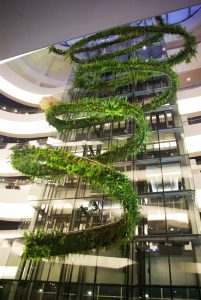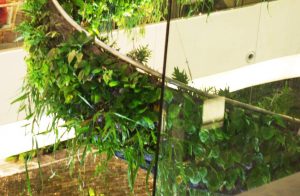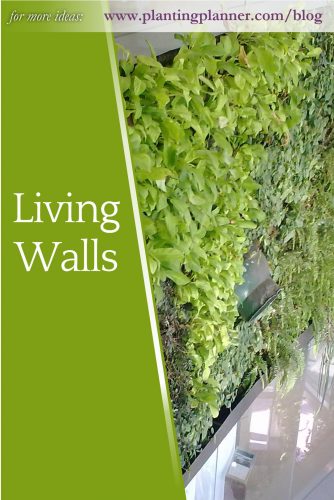from The Weatherstaff PlantingPlanner – intelligent garden design software
You know the scenario – you’re wandering around the garden centre, a horticultural show, a friend’s garden, and there’s this gorgeous little plant you desperately need to own. So you buy it (or dig up a clump if offered or take a few seeds). Your own garden is bursting at the seams. There is no room for a single extra plant, but how many gardeners are staunch minimalists who will stoically turn their backs on that enticing little plant?
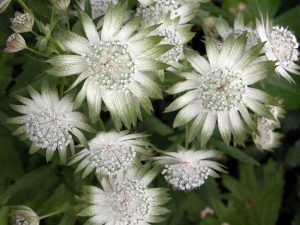
So the borders are bulging with delicious combinations of plants and you dig up more lawn for an extra bed. You plant up huge flower pots and hanging baskets. You drape fences with climbers – perhaps even cover the shed roof and the wheelie bin. Where next?
You could always try creating a living wall!
Vertical gardening is the craze that’s been sweeping the world. In our concrete and glass city centres, they are soothing to the eye, covering up ugly, decaying or just plain boring grey structures and creating new green spaces in our cities. Green walls lower the temperatures of buildings and help reduce the urban heat effect. They have been used indoors in countries with severe winters, like Canada, to counter Seasonal Affective Disorder (SAD). And, of course, they are a work of art in themselves.
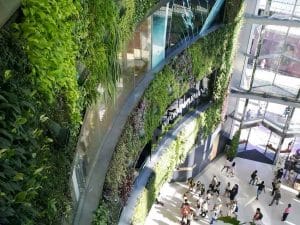
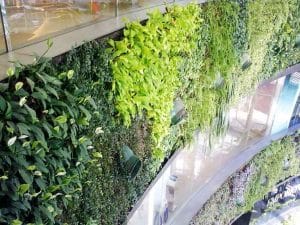
Patrick Blanc, the French botanist and pioneer of living walls, is a garden artist, creating his living wall installations around the globe – Paris, New York, Tokyo, Dubai and Bangkok. His latest installation – ‘Rain Forest Chandelier’ at the new EmQuartier luxury shopping mall in Bangkok – looks visually stunning.
It spirals down for over 100 metres, above the 3,000 square metre indoor tropical water gardens, 5 storeys above the streets of the country’s capital city.
Since the plants on living walls must be able to survive without soil, relying instead on a nutrient solution, the careful choice of plants is essential.
The first green walls were made with tropical species, plants observed to grow vertically in the wild without the need for soil. However, gardeners now use a much wider choice of plants, experimenting to find ones that can cope with being grown hydroponically.They also need to have interesting foliage, which looks good when viewed from underneath, and require little in the way of regular maintenance.
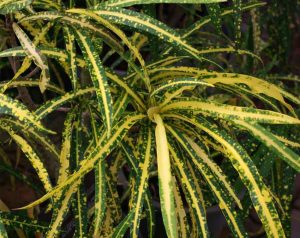
Tropical plants such as Calathea, Codiaeum variegatum pictum, Spathiphyllum wallisii and the Philodendrons work well on indoor living walls – or outdoor walls in tropical regions!
Tougher plants for outdoor walls include fuchsia, hebe, epimediums and ferns such as Cyrtomium fortunei and Asplenium.
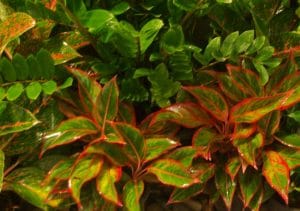
Pin for later
For more gardening ideas, click here to follow the Weatherstaff PlantingPlanner on Pinterest.


